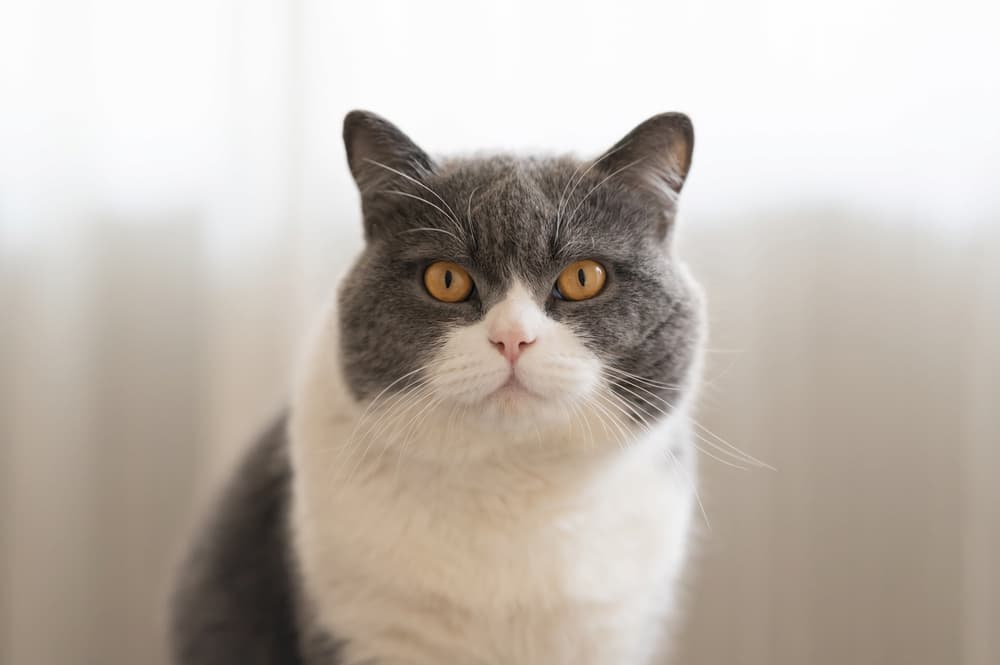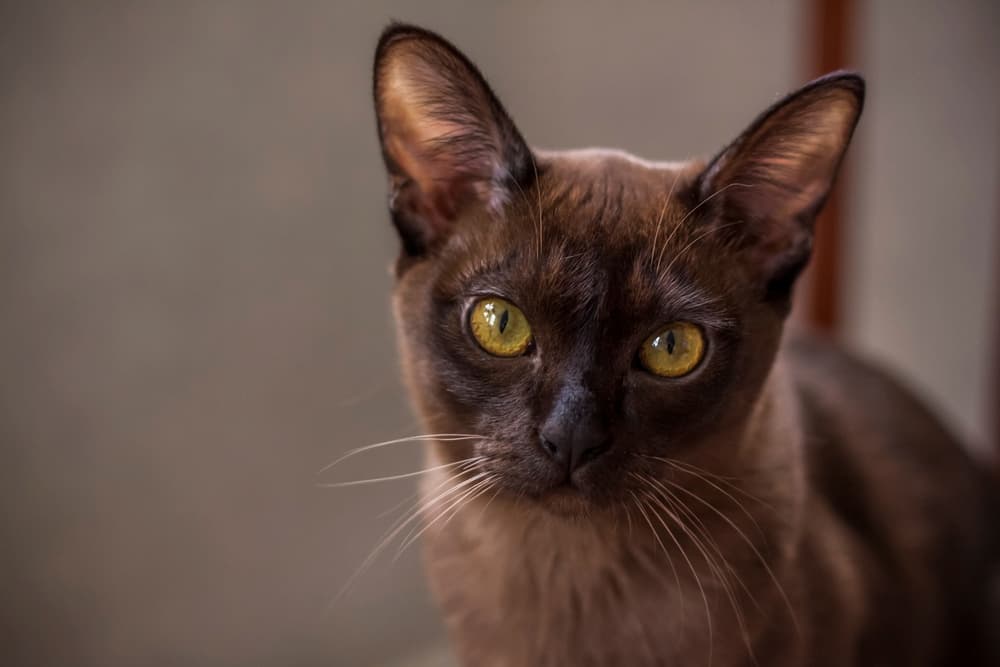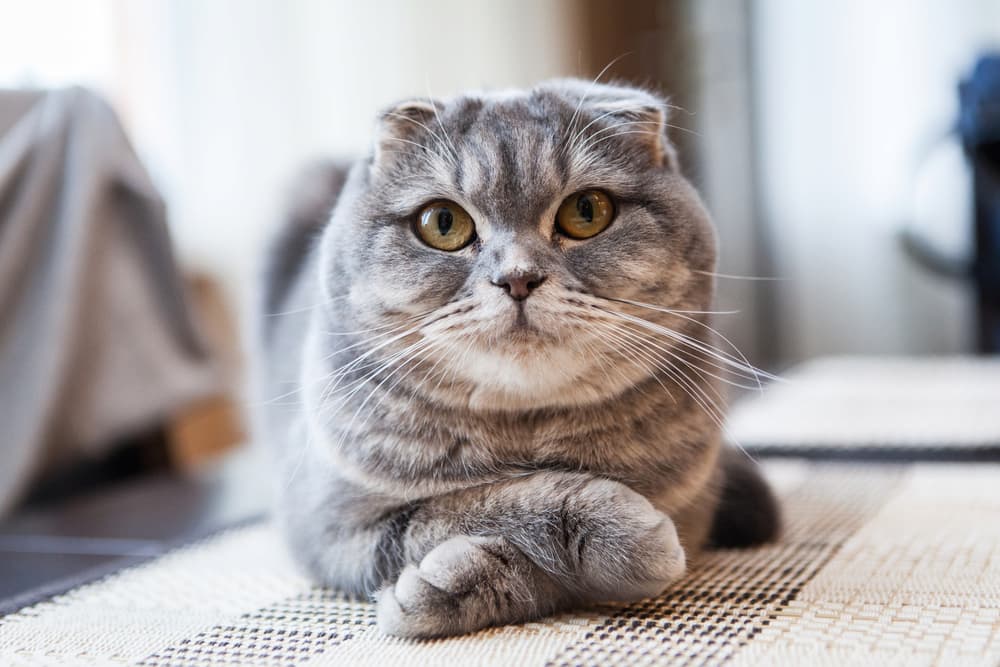6 Flat Faced Cat Breeds

There’s just something about cats with flat faces that’s adorable beyond compare. Most people find smooshy face cats hard to resist.
“I think that it’s because their faces rather resemble that of a human child,” says Teresa Keiger, an all-breed judge for the Cat Fanciers’ Association (CFA) and creative director and editor for the CFA’s magazine, Cat Talk. “They’re completely round with very large eyes that lie at the center of the face. Add to that the sweet open expression that a beautiful cat has, and it’s easy to fall in love with them.”
If you’re thinking of bringing home one of the flat faced cat breeds, know that they are incredibly sweet but will require some special care due to the unique construction of their faces, eyes, and nose. Read on to learn about some different types of flat face cat breeds and how to care for them.
What Is a Flat Faced Cat?
The scientific term for cat breeds with flat faces is “brachycephalic,” which means “shortened head” and refers to the fact that these cats have skull bones that are shorter than normal, resulting in a pushed-in face and nose. Of all the cat breeds, a handful have flatter faces than normal, but only three cat breeds are truly brachycephalic: the Persian, the Exotic, and the Himalayan.
The Persian was the very first brachycephalic cat breed, and the Exotic and Himalayan were directly developed from this breed, so we have the Persian cat to thank for all the smush faced cats that make us smile. Persians have existed for many centuries, which means flat faced cats in general have been around a long time. Today, the Persian is the most popular purebred cat.
6 Flat Faced Cat Breeds
In addition to the Persian, Himalayan, and Exotic, a few other breeds have faces flatter than the typical cat, though they are not technically classified as brachycephalic. These include the British Shorthair, Burmese, and Scottish Fold.
Let’s meet 6 smush faced cat breeds known for their uniquely endearing flat faces.
Persian

The original flat face cat, this ancient breed developed in Persia and Iran, where it has been known for hundreds of years, possibly as far back as the 1600s. The Persian’s flat face, with its tiny nose and large, expressive eyes, has been described as pansy-like. When viewed in profile, the Persian’s forehead, nose, and chin are vertically aligned. The Persian is solidly built, heavily boned, and short legged, with a long, luxurious flowing coat that requires significant grooming to prevent matting. This laid-back breed is known for its sweet, affectionate temperament and quiet, musical voice.
Exotic

The Exotic, also known as the Exotic Shorthair, is basically a Persian with a shorter coat. The Exotic was created by breeding American Shorthair cats with Persian cats, and now the Exotic is a completely separate breed from the Persian. A true Exotic will look just like a Persian but with a short, dense, plush coat. Because of this easy-care fur, the Exotic is a great choice for people who like the look of the Persian but aren’t up for the huge coat-maintenance commitment. The Exotic inherited the Persian’s brachycephalic pushed-in face, complete with snub nose and large, round, wide-set eyes. In personality, the Exotic is very similar to the Persian: gentle, loving, and calm, with a sweet but seldom-heard voice.
Himalayan

The Himalayan is a Persian cat with the pointed coloration of the Siamese. Depending on which cat registry you consult, the Himalayan is considered a separate breed from the Persian (as stated by The International Cat Association, or TICA), or simply a color division of the Persian cat breed (according to the CFA). Himalayan cats have lighter-colored bodies with darker “points” of color on their face, ears, legs, and tail. These color-pointed shades can include chocolate, seal, lilac, blue, and red.
British Shorthair

The British Shorthair is not a truly brachycephalic cat like the Persian, Exotic, and Himalayan. Instead, it has a round, moderately flat face, with round cheeks and large, round eyes set well apart — features that give it a sweet and endearing expression. This medium-to-large-sized cat has a compact, balanced body with a short, dense, soft coat that appears in many different colors and patterns. The British Shorthair is likely the oldest English breed, which once thrived in the streets but was eventually refined by breeders. Its temper is laid back, friendly, and affectionate, charming everyone it meets.
Burmese

Like the British Shorthair, the Burmese has a round, moderately flat face with large, wide, expressive eyes. This breed was developed not in Burma, but in the United States, by crossing a brown cat from Burma with a Siamese cat. The medium-sized Burmese is compact and solidly built, and its short, glossy coat feels like satin. It’s typically one of four solid colors: sable (a warm brown), champagne (honey beige), platinum (pale silvery-gray), and blue (medium gray). When it comes to personality, this people-oriented breed is incredibly endearing, lively, friendly, and adoring of its human family.
Scottish Fold

Like the British Shorthair and the Burmese, the Scottish Fold’s face is only moderately pushed in. However, the breed’s very large, round eyes and tightly folded ears combine to strengthen the smoosh faced effect, making the Scottish Fold look like a sweet little owl. This breed can trace its origins back to a single white kitten with folded ears born in a litter of barn cats in Scotland. The white kitten’s ears were the result of a random and spontaneous mutation, but someone fell in love with its unique look and used her to start a breeding program. Scottish Folds are affectionate, laid back, and a friend to all.
Health Conditions Impacting Flat Faced Cats

Not all flat faced cats experience health complications resulting from their unique facial structure, but some cats may have issues with their face, throat, or nose.
“Due to their structural differences causing that smushed face look, these breeds are generally prone to ocular (eye) infections, respiratory infections, and breathing difficulties,” says Louis DelGiudice, DVM, DACVECC, National Emergency Specialty Director at AmeriVet Veterinary Partners. “Flat faced cats have a decreased ability to properly inhale and exhale through their nasal passages, making it more difficult for them to breathe.”
Flat faced cat breeds also may have a condition called brachycephalic airway syndrome (congenital obstructive upper airway disease). This term encompasses a group of related breathing issues seen in brachycephalic breeds.
Some brachycephalic cats might have an elongated soft palate (the soft part of the roof of the mouth), narrow windpipe (trachea), narrow, small nostrils (stenotic nares), or tissue in front of the vocal cords that obstructs breathing (everted laryngeal saccules).
The shape of the skull in some brachycephalic cats can occasionally result in dental issues. “The foreshortening of the head has led to some Persians and Exotics having teeth and jaws that are misaligned, which may cause problems later,” Keiger says. “This is something that a responsible breeder checks for in their breeding cats.”
Caring for Flat Faced Cat Breeds

Flat faced cat breeds need some extra eye care due to the shape of their faces, which cause the eyes to protrude. According to Dr. DelGiudice, skin folds, hair, dust, and debris can come into contact with the eyes, so regular cleaning and irrigation is important for eye health. “Use a damp cloth of warm water to clean away discharge and debris, being careful to not touch the eye,” he recommends.
Keiger points out that because the large eyes protrude, flat faced cats are vulnerable to injury during play. “Be careful when playing with toys that have long strands that might ‘flick’ them in the eyes,” she warns.
Flat faced cats also need extra attention paid to their shortened noses, which can easily become clogged. Wipe their nose daily to clear away any blockages.
Flat faced cats can’t handle heat as well as other cats, so always be aware of the temperature inside your home. “Dogs and cats predominantly release excessive body heat through exhalation,” Dr. DelGiudice explains. “[Flat faced cats’] inability to properly exhale causes these breeds to be predisposed to overheating. It is important to keep these cats in cooler dry environments.”
If you’re concerned about your flat faced cat’s breathing, schedule an appointment with your veterinarian. In severe cases, surgery might be recommended to correct structural problems. Keeping your cat at a healthy weight will also help them breathe easily.
Signs that a flat faced cat is having difficulty breathing include noisy breathing (snorting or snoring), gagging or vomiting, difficulty exercising, inability to stay cool in heat, blue-looking gums or tongue, or sudden collapse.









